2024-07-08
한어Русский языкEnglishFrançaisIndonesianSanskrit日本語DeutschPortuguêsΕλληνικάespañolItalianoSuomalainenLatina
Background: Current status and challenges of the textile industry
The textile industry is one of the oldest manufacturing industries in the world. As a pillar industry of the national economy, it has long provided a large number of employment opportunities and economic contributions to society. However, with the rapid development of the global economy and the intensification of market competition, the textile industry faces many challenges:
Cost pressure:The continuous increase in raw material, labor and energy costs has squeezed the profit margins of traditional textile companies.
Increased quality requirements:Consumers' requirements for the quality, personalization and environmental protection of textile products are constantly increasing, and traditional production methods are difficult to meet the diverse and high-standard market demands.
low efficiency: In the traditional textile production process, there are many manual operations, the level of automation is low, production efficiency is difficult to improve, and resources are seriously wasted.
Market volatility:In the context of globalization, market demand is unpredictable, and textile companies need more flexible production and supply chain management to cope with rapid market changes.
Environmental pressure:As a high-energy-consuming and high-pollution industry, the textile industry is facing increasingly stringent environmental regulations and social responsibility requirements. Enterprises must find paths to green production and sustainable development.
The importance of intelligence and digitalization: Why the textile industry needs transformation
In this context, intelligent and digital transformation has become a key way for the textile industry to cope with challenges and enhance its competitiveness. Intelligent and digital transformation can not only help textile companies improve production efficiency, reduce costs, and improve quality, but also meet the diverse needs of the market and achieve sustainable development. Specifically, the importance of intelligent and digital transformation in the textile industry is reflected in the following aspects:
Improve production efficiency:By introducing automated equipment and robotics technology, manual operations can be reduced and production speed and efficiency can be improved.
improve product quality:Utilize online quality monitoring and intelligent detection technology to control and improve the production process in real time to ensure stable and improved product quality.
Optimize resource allocation:Through big data analysis and Internet of Things technology, the entire production process can be optimized, resources can be used efficiently, and waste can be reduced.
Personalized customization:The digital management system can flexibly adjust production plans and processes to meet the personalized needs of consumers and improve customer satisfaction.
Enhanced market responsiveness:Digital supply chain management systems can quickly respond to market changes, optimize inventory and logistics management, and reduce inventory backlogs and logistics costs.
Promoting green production:Intelligent and digital technologies can help companies reduce energy consumption and pollution emissions, and promote green production and sustainable development.
In short, the intelligent and digital transformation of the textile industry is not only an urgent need to cope with current challenges, but also an inevitable trend for the future development of the industry. Through continuous innovation and technological upgrading, textile enterprises can remain invincible in the fierce market competition and achieve long-term sustainable development.
The core of the intelligentization of the textile industry lies in the use of advanced technologies to transform traditional production and management models and improve overall efficiency and competitiveness. The following are the key technologies of the intelligentization of the textile industry, which play an important role in different links and bring significant benefits to enterprises.
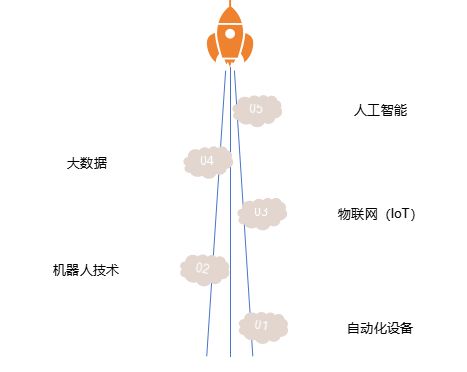
1、Automation Equipment and Robotics
Automation equipment and robotics are the foundation of the intelligent textile industry. They are widely used in multiple production links, including:
Automated spinning and weaving machines: By introducing automated spinning and weaving machines, production speed and accuracy can be greatly improved and human errors can be reduced.
Smart cutting machine:Use intelligent cutting machines for precise cutting to improve fabric utilization and reduce waste.
Industrial robot:The use of industrial robots in handling, packaging, inspection and other links can reduce the labor intensity of workers and improve work efficiency and safety.
2、Application of Internet of Things (IoT) in Textile Production
The Internet of Things (IoT) technology connects devices, sensors, and systems to achieve real-time data collection and analysis, thereby optimizing production management:
Device networking:Connect production equipment to the Internet, monitor operating status and production parameters in real time, and detect and handle equipment failures in a timely manner.
Environmental monitoring:Sensors are used to monitor the temperature, humidity and other parameters of the production environment to ensure that production conditions meet requirements and improve product quality.
Smart Logistics:Use IoT technology to manage the logistics of raw materials and finished products, realize automated warehousing and transportation, and improve logistics efficiency.
3、Application of Big Data and Artificial Intelligence (AI)
Big data and artificial intelligence (AI) technologies play an increasingly important role in the textile industry, optimizing production and management through data analysis and intelligent decision-making:
Production data analysis:By using big data technology to analyze the large amount of data generated in the production process, potential production problems and optimization opportunities can be discovered, thereby improving production efficiency and quality.
Intelligent prediction and decision-making:Use AI algorithms to predict market demand and production trends, optimize production planning and inventory management, and reduce resource waste.
Personalization:Analyze consumer preferences and market trends through AI technology to provide customers with personalized products and services, and improve customer satisfaction and loyalty.
The intelligent transformation of the textile industry cannot be separated from the support of these key technologies. Automation equipment and robotics technology improve production efficiency and precision; Internet of Things technology enables comprehensive monitoring and optimization of the production process; big data and artificial intelligence provide companies with in-depth analysis and intelligent decision-making support. By comprehensively applying these technologies, textile companies can maintain their advantages in the fierce market competition and achieve sustainable development.
In the process of intelligent transformation of the textile industry, digital management is the key to improving enterprise operational efficiency, optimizing resource allocation and ensuring product quality. By implementing a digital management system, enterprises can achieve visualization, refinement and intelligent management of the entire process. The following are several key digital management systems and their applications in the textile industry.
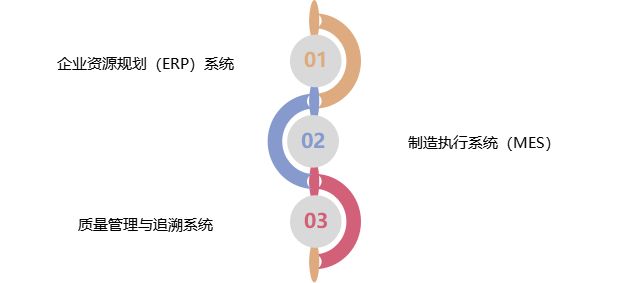
1、Enterprise Resource Planning (ERP) Systems
The Enterprise Resource Planning (ERP) system is a management information system that integrates all business aspects of an enterprise, helping the enterprise optimize resource allocation and improve operational efficiency.
Fully integrated:The ERP system fully integrates various business links such as production, procurement, inventory, sales, and finance to ensure the seamless flow of information between departments.
Real-time data:Through real-time data collection and analysis, enterprises can grasp the dynamics of each business link in real time and make timely decisions.
Cost Control:The ERP system helps enterprises to manage various costs in a refined manner, identify and eliminate waste, and improve resource utilization.
2、Manufacturing Execution System (MES)
The Manufacturing Execution System (MES) is a bridge connecting the enterprise management and the production site, improving the level of production management by real-time monitoring and controlling the production process.
real time monitoring:The MES system can monitor the equipment operating status, production progress and product quality at the production site in real time to ensure the smooth progress of the production process.
Production Scheduling:The MES system improves production efficiency and reduces production bottlenecks by optimizing production scheduling and resource allocation.
Data Tracking:The MES system records and tracks every link and operation in the production process to ensure the transparency and traceability of the production process.
3、Quality management and traceability system
The quality management and traceability system helps companies ensure product quality, improve customer satisfaction and brand reputation through comprehensive quality monitoring and traceability functions.
Comprehensive quality control:The quality management system conducts comprehensive quality monitoring in all aspects of production, promptly discovers and solves quality problems, and reduces the defective rate.
Traceability function:The quality traceability system records the production process, raw material sources, production parameters and other information of each batch of products, realizing full-process traceability of the products.
keep improve:By analyzing quality data, companies can identify weak links in the production process and continuously improve production processes and quality control methods.
The implementation of digital management systems is an important step for textile enterprises to move towards intelligence. The ERP system improves the operational efficiency and cost control capabilities of enterprises through comprehensive integration and real-time data; the MES system improves the level of production management through real-time monitoring and production scheduling; the quality management and traceability system ensures product quality and safety through comprehensive quality monitoring and traceability functions. Through the comprehensive application of these digital management systems, textile enterprises can achieve refined management and improve their overall competitiveness and market responsiveness.
In the intelligent transformation of the textile industry, the construction of full-process intelligent logistics is a key link in achieving efficient production and supply chain management. Through intelligent logistics delivery systems, automated equipment, and advanced monitoring and scheduling technologies, companies can significantly improve logistics efficiency, reduce labor costs, and improve resource utilization. The following are the main aspects of full-process intelligent logistics construction.
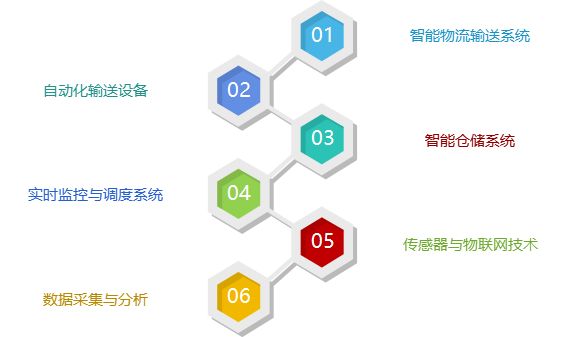
1、Intelligent logistics transportation system
The intelligent logistics transportation system integrates automated transportation equipment and intelligent warehousing systems to achieve efficient and accurate transportation and management of production materials and finished products.
2、Automatic conveying equipment
Automatic conveyor belt:The automated conveyor belt system transports raw materials and semi-finished products on the production line, achieving seamless connection, reducing manual handling and improving production efficiency.
Automated Guided Vehicles (AGV):AGV is used to automatically transport materials and finished products between production workshops and warehouses, flexibly respond to different transportation needs, and improve logistics efficiency and flexibility.
3、Intelligent warehousing system
Automated Warehouse:Automated high-bay warehouses achieve efficient use of warehouse space and rapid storage and retrieval of materials through high-density storage and automatic storage and retrieval equipment.
Intelligent warehouse management system (WMS):The WMS system manages and monitors inventory in real time, optimizes inventory layout and material flow, and improves warehouse management efficiency and accuracy.
4、Real-time monitoring and dispatching system
Real-time monitoring system:By installing sensors and cameras in the logistics transportation and warehousing systems, each link in the logistics process can be monitored in real time to ensure the normal operation of the logistics system and timely handling of abnormal situations.
Intelligent scheduling system:The intelligent scheduling system optimizes logistics scheduling based on real-time data and algorithms, reasonably arranges transportation routes and times, and maximizes logistics efficiency.
5、Sensors and IoT Technology
Sensor Applications:Various sensors (such as position sensors, temperature and humidity sensors, etc.) are used in automated conveying equipment and warehousing systems to collect key data in the logistics process in real time.
IoT Technology:Through the Internet of Things technology, sensors, equipment and systems are connected to achieve real-time transmission and sharing of data and build an intelligent logistics network.
6、Data collection and analysis
data collection:Utilize sensors and IoT technology to comprehensively collect data in the logistics process, including equipment operating status, logistics routes, inventory information, etc.
data analysis:Through big data analysis technology, the collected data is analyzed to discover bottlenecks and optimization opportunities in the logistics system, thereby improving the overall efficiency of the logistics system.
The construction of full-process intelligent logistics is an important part of the textile industry's intelligent transformation. By integrating automated conveying equipment, intelligent warehousing systems, real-time monitoring and scheduling systems, as well as sensors and Internet of Things technologies, companies can significantly improve logistics efficiency, optimize resource allocation, and increase the flexibility and accuracy of production management. Data collection and analysis technology provides solid data support for the continuous optimization of the logistics system, ensuring that companies maintain their leading position in the fierce market competition.
In the textile production process, waste recycling (waste and scraps generated during the production process) processing is an important link. Intelligent waste recycling collection and processing systems can not only improve resource utilization, but also reduce environmental pollution, enhance the economic benefits and social responsibility of enterprises. The following are the key components of intelligent waste recycling collection and processing.
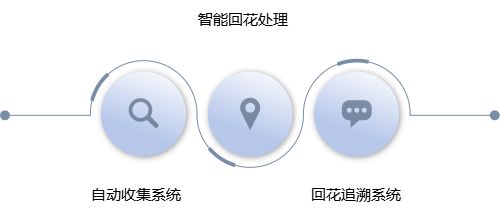
1、Automatic collection system
The automatic collection system collects the waste generated during the production process in real time and efficiently by installing automatic collection equipment at each link of the production line.
Smart Sensors:The sensor detects the location and amount of the returned waste and automatically starts the collection device to collect it.
Conveyor system:Use automated conveyor belts or pneumatic conveying systems to quickly transport the returned waste to a centralized processing area, reducing manual handling and improving collection efficiency.
Sorting device:The automatic sorting device classifies the returned waste according to its type and material to ensure the efficiency and accuracy of subsequent processing.
2、Intelligent flower return processing
The intelligent waste return processing system uses automated equipment and advanced technology to process waste returns efficiently and environmentally friendly, thereby maximizing the utilization of waste return resources.
Automatic compression equipment:Automatic compression equipment compresses the recycled waste to reduce its volume for easy storage and transportation.
Classification and recycling equipment:By using intelligent sorting and recycling equipment, recycled waste is classified according to its material to achieve effective reuse of resources.
Environmental protection treatment technology:Introduce advanced environmental protection treatment technology to harmlessly treat the recycled waste that cannot be directly reused, reducing the impact on the environment.
3、Return flower traceability system
The return waste traceability system uses information technology to record and track the entire process of return waste generation, collection, and processing, ensuring the transparency and traceability of return waste processing.
Data collection and recording:Collect data on the generation, collection and processing of returned flowers in real time, and record information such as the type, quantity, source, etc. of returned flowers in detail.
Traceability management platform:A return waste traceability management platform has been established to comprehensively manage and track the return waste processing process, ensuring that the processing of each batch of return waste is traceable and controllable.
Data analysis and optimization:By analyzing the return waste processing data, we can discover problems and optimization opportunities in the processing process, and continuously improve the efficiency and effectiveness of return waste processing.
The intelligent waste collection and processing system is an important measure for textile enterprises to achieve green production and sustainable development. Through the efficient collection of waste by the automatic collection system, the environmentally friendly treatment of waste by the intelligent waste processing system, and the full monitoring and management of the waste traceability system, enterprises can improve resource utilization, reduce environmental pollution, and enhance economic benefits and social responsibility. Intelligent waste processing is not only an effective means for enterprises to cope with environmental pressure, but also the only way to achieve long-term sustainable development.
In the textile industry, quality is the lifeline of enterprise survival and development. The full-process intelligent quality traceability system ensures the stability and traceability of product quality through online quality monitoring, data collection and analysis, and comprehensive quality traceability, and enhances customer trust and market competitiveness. The following are the key components of the full-process intelligent quality traceability system.
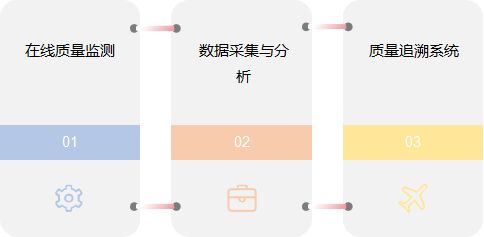
1、Online quality monitoring
The online quality monitoring system monitors product quality in real time and detects and corrects quality problems in a timely manner through intelligent monitoring equipment installed in various links of the production line.
Smart Sensors:Intelligent sensors monitor key quality parameters in the production process in real time, such as fiber length, yarn evenness, fabric density, etc., to ensure that product quality meets standards at every stage.
Automatic testing equipment:Automatic inspection equipment conducts uninterrupted quality inspections on the production line, such as fabric appearance inspection, color difference inspection, etc., to promptly detect and remove unqualified products.
Alarm and feedback system:When the quality monitoring equipment detects an abnormality, the system automatically alarms and promptly provides feedback to the operator for adjustment and correction.
2、Data collection and analysis
The data collection and analysis system collects and analyzes the massive data generated during the production process to identify quality problems and improvement opportunities, thereby improving the overall quality level.
data collection system:Use sensors and monitoring equipment to collect quality data in the production process in real time, including production parameters, test results, environmental conditions, etc.
Big Data Analysis:Through big data analysis technology, the collected data is deeply analyzed to identify key factors and potential problems affecting product quality, and provide data-driven improvement suggestions.
Prediction and Optimization:Use data analysis results to predict future quality trends, optimize production processes and quality control methods, and prevent quality problems from occurring.
3、Quality traceability system
The quality traceability system achieves full-process traceability of product quality through detailed recording and management of the entire production process, ensuring that the quality of each product is transparent and traceable.
Traceability records:The quality traceability system records the production process of each batch of products, including information such as the source of raw materials, production parameters, quality inspection results, etc., forming a complete traceability chain.
QR code and RFID technology:By applying QR codes or RFID tags to products, rapid product traceability and information query can be achieved, improving traceability efficiency and accuracy.
Traceability management platform:Establish a quality traceability management platform to centrally manage and query traceability data to ensure that the production process of each batch of products can be checked and controlled.
The full-process intelligent quality traceability system is an important means for textile enterprises to improve product quality and market competitiveness. Through online quality monitoring to control product quality in real time, data collection and analysis to discover and improve quality problems, the quality traceability system ensures the transparency and traceability of product quality, and enterprises can achieve comprehensive quality management and continuous improvement. Intelligent quality traceability not only improves the market competitiveness and customer satisfaction of products, but also provides a solid quality guarantee for the long-term development of enterprises.
In the process of intelligent transformation of the textile industry, the integration of smart factory management systems is the key to achieving efficient production and refined management. By integrating enterprise resource planning (ERP), manufacturing execution system (MES) and supervisory control and data acquisition (SCADA) systems, enterprises can achieve comprehensive information sharing and collaborative optimization of production, and improve overall operational efficiency. The following are the main aspects of the integration of smart factory management systems.

1、Smart Factory Management System
The smart factory management system integrates various business links of the enterprise through the comprehensive use of information technology and automation technology, and realizes digital management of the entire process from production planning, process control to quality management.
Full process management:It covers every aspect including production planning, material management, production execution, quality control, etc., achieving seamless connection and comprehensive management.
Real-time monitoring and scheduling:Through real-time data collection and monitoring, production scheduling and resource allocation can be optimized to improve production efficiency and flexibility.
Data-driven decision making:Based on big data analysis and artificial intelligence technology, it provides intelligent decision-making support and optimizes production processes and management processes.
2、Integration of ERP, MES and SCADA systems
The integration of enterprise resource planning (ERP), manufacturing execution system (MES) and supervisory control and data acquisition (SCADA) systems is the core of the smart factory management system, which achieves overall optimization through data interoperability and functional collaboration between systems.
ERP system:The ERP system is responsible for the enterprise's resource planning and management, including procurement, inventory, sales, finance and other modules, providing global resource allocation and operation management.
MES system:The MES system connects the management level and the production site, monitors and controls the production process in real time, optimizes production scheduling and execution, and ensures the efficient execution of the production plan.
SCADA system:The SCADA system is responsible for real-time monitoring and data collection of on-site equipment to ensure the normal operation of production equipment and real-time adjustment of parameters.
3、System integration and data sharing
System integration and data sharing are the foundation of smart factory management systems. Through comprehensive interoperability and sharing of data, information transparency and intelligent decision-making can be achieved.
Data interface and standardization:Through standardized data interfaces, data interoperability between ERP, MES, and SCADA systems is achieved, ensuring the consistency and accuracy of data in each system.
Real-time data sharing:Utilize the Internet of Things and big data technologies to realize real-time collection and sharing of production site data, and support the collaborative work and decision-making support of various systems.
Integrated management platform:Establish a comprehensive management platform to integrate the data and functions of various systems, provide a unified operation interface and management view, and achieve unified management and control of the entire process.
The integration of smart factory management systems is an important way for textile enterprises to achieve efficient production and refined management. Through the integration and data sharing of ERP, MES, and SCADA systems, enterprises can achieve digital management and real-time monitoring of the entire process, and improve production efficiency and management level. The smart factory management system not only optimizes resource allocation and production scheduling, but also realizes intelligent and transparent management through data-driven decision-making, providing strong support for the sustainable development of enterprises.
The future prospects and challenges of textile industry intelligence and digitalization are key topics. The following are relevant contents:
The textile industry is at a critical stage of embracing intelligent and digital transformation. The future development trend will be how to use advanced technologies to improve production efficiency and product quality. At the same time, the challenges faced also require innovative strategies to deal with.
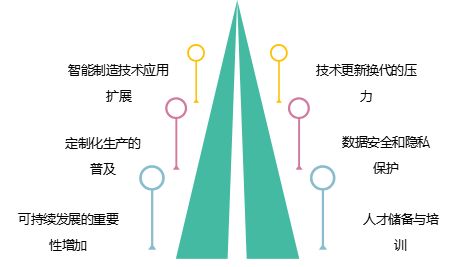
1、Future trends
Intelligent manufacturing technology application expansion:The textile industry is expected to continue to expand the application of smart manufacturing technologies, such as the Internet of Things, artificial intelligence, and big data analysis, to enhance the level of automation and intelligence in the production process.
Popularity of customized production:As consumer demand becomes more personalized and rapidly changing, customized production will become the mainstream trend in the future, and textile companies need to achieve rapid response and flexible production through digital technology.
The growing importance of sustainable development:The improvement of environmental awareness will drive the textile industry to transform towards sustainable development, including efficient use of resources, low-carbon production and promotion of circular economy models.
2、Challenges and coping strategies
Pressure of technological upgrading:Rapid technological advancement may cause equipment and systems to quickly become obsolete, and companies need to continue investing in R&D and technological upgrades to remain competitive.
Data security and privacy protection:As the digitalization process deepens, data security and privacy protection face increasing challenges. Enterprises need to strengthen information security management and comply with relevant laws and regulations to protect user data.
Talent reserve and training:Intelligent and digital transformation requires a large number of talents with relevant skills. Enterprises need to strengthen talent reserves and continuous training to cope with future technological challenges and changes in demand.
The future prospects of intelligentization and digitalization of the textile industry are full of hope, but at the same time it faces many challenges. By grasping the development trend and adopting effective response strategies, textile enterprises can gain sustainable development and competitive advantages in the fiercely competitive market.
in conclusion
The overall benefits of intelligence and digitalization
Intelligence and digitalization have brought significant overall benefits to the textile industry, with far-reaching impacts from production efficiency to product quality to market competitiveness:
Improve production efficiency:Through the application of automated equipment and intelligent manufacturing technology, textile companies can optimize production processes and significantly improve efficiency, reduce labor costs, and improve production capacity and flexibility.
Optimize product quality:Online quality monitoring and data-driven quality management systems make product quality control more accurate and reliable, reduce defective rates and improve customer satisfaction.
Improve market competitiveness:The ability to customize production and quickly respond to market demands enables enterprises to meet customer needs more flexibly, enhance market competitiveness and achieve sustainable development.
Long-term impact on the textile industry
The long-term impact of intelligence and digitalization will profoundly shape the future development direction of the textile industry:
Promote industrial upgrading:The widespread application of intelligent technology will promote the upgrading and transformation of the textile industry from traditional manufacturing to intelligent manufacturing, and improve the overall industrial level.
Promoting sustainable development:The application of digital technology helps to improve resource utilization efficiency and reduce environmental impact, and promote the textile industry to develop in the direction of sustainable development.
Expanding new business models:Digital transformation provides textile companies with a platform to explore new business models and market opportunities, such as IoT services and data-driven customer customization.
In the future, the textile industry will continue to rely on intelligent and digital technologies, constantly innovate and optimize, and achieve more efficient, environmentally friendly and competitive development goals.
Intelligence and digitalization are not only the path of modernization and transformation of the textile industry, but also the key driving force for the long-term development of the industry. By making full use of advanced technology and data-driven management methods, textile companies can maintain their leading position in the fiercely competitive global market and contribute to sustainable development.